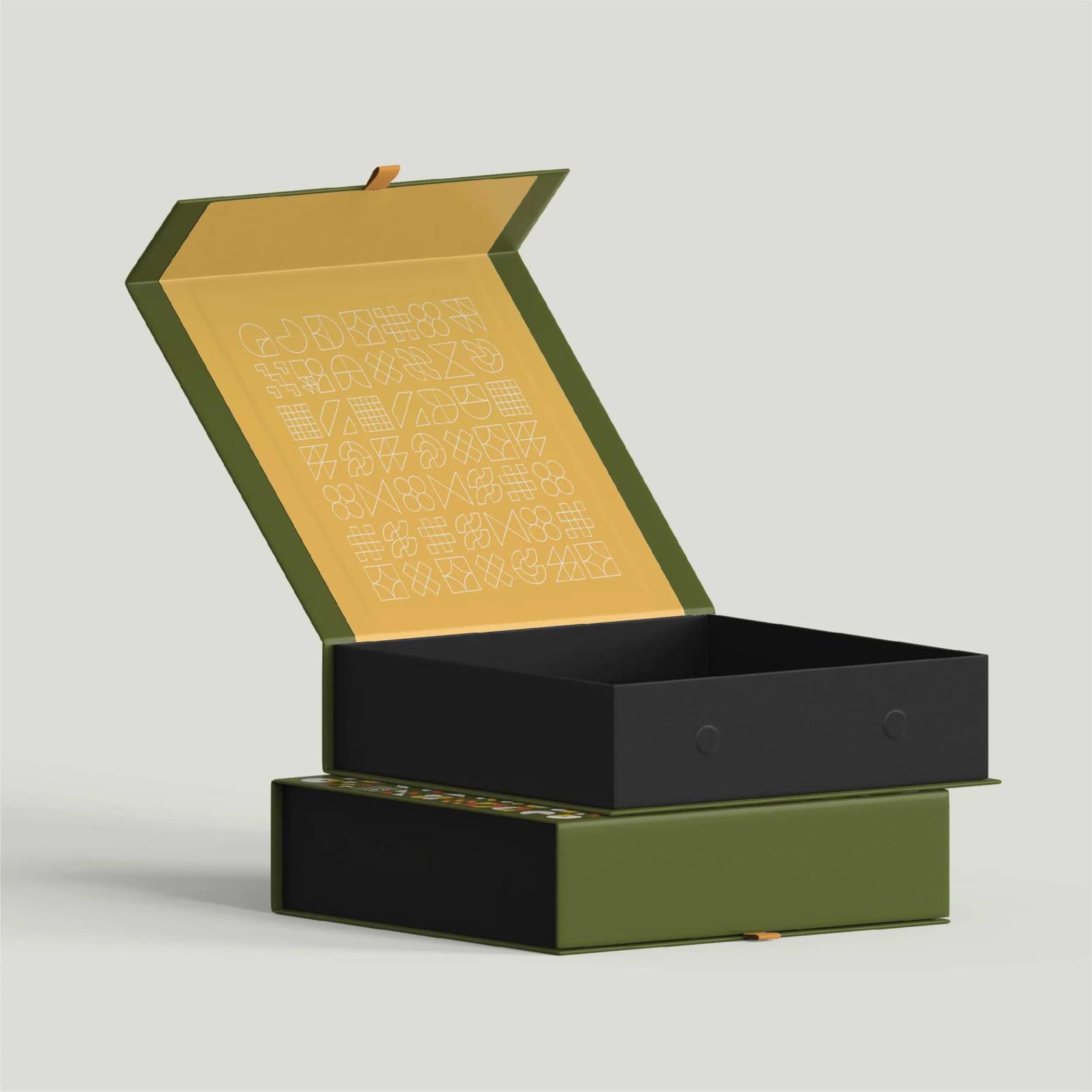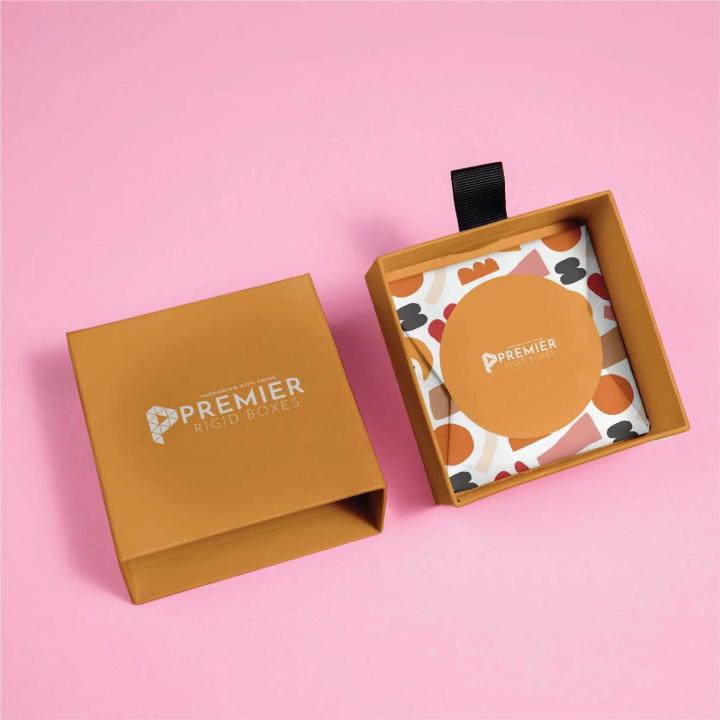Notifications

7 minutes, 48 seconds
-98 Views 0 Comments 0 Likes 0 Reviews

When it comes to packaging that feels substantial and looks refined, rigid boxes consistently stand out. These sturdy containers offer both protection and a premium unboxing experience—a combination that resonates with customers long after they’ve opened the lid. In this guide, we’ll break down the most popular rigid box styles—like two piece rigid boxes, rigid drawer boxes, and magnetic closure rigid boxes—and explain when to use rigid boxes with insert or custom sleeve & tray rigid boxes. By the end, you’ll have a clear sense of which rigid box design best fits your product’s needs.
Rigid boxes, sometimes called set‑up boxes, are crafted from thick paperboard or chipboard wrapped in decorative paper or specialty materials. Unlike folding cartons that collapse flat, rigid boxes retain their shape, offering superior crush resistance and a sense of luxury. You’ll frequently see them used for premium electronics, high‑end cosmetics, and collector’s editions of books or games.
Tactile Quality: The solid walls feel substantial in hand, reinforcing perceptions of value.
Durability: Thick board and optional inserts protect delicate items from shock and pressure.
Customization: From spot UV and foil stamping to fabric wraps, finishes can match any brand identity.
A two piece rigid box consists of a separate lid and base. The snug‑fitting lid creates a clean, minimalist silhouette. This classic look works well for gift packaging, premium stationery, and tech accessories. Because the lid slides fully off, it builds anticipation and showcases the product as soon as customers lift it.
Also known as slide‑out or slipcase boxes, rigid drawer boxes feature an outer shell and an inner tray that slides out like a drawer. Often paired with a ribbon pull, this design adds an interactive element to unboxing. You’ll find these boxes in high‑end watch packaging and luxury subscription services, where the unique reveal adds to the overall customer experience.
Magnetic closure rigid boxes integrate hidden magnets in the lid and base for a snap‑shut feel—no ribbons or clasps required. This style is popular in the cosmetics and tech sectors, where brands want a sleek, seamless look combined with secure closure. The satisfying click reinforces quality without visible hardware.
A custom sleeve & tray rigid box includes a separate outer sleeve that slides over an inner tray. This two‑part structure lets you print on both components, creating an extra branding opportunity. Sleeves can feature embossing, foil stamping, or die‑cut windows, while the tray keeps products firmly in place.
When protection is paramount, consider rigid boxes with insert solutions. Inserts—made from foam, molded pulp, or die‑cut chipboard—hold items steady during shipping. They’re essential for fragile products like glass bottles, electronics, and jewelry. Custom inserts can be wrapped in the same material as the box, ensuring a cohesive look.
Measure your product’s dimensions carefully, accounting for any padding or protective wrap. A well‑fitting rigid box prevents movement inside, reducing the risk of damage. If you’re adding an insert, include its thickness in your calculations.
Choose a paperboard thickness between 1.5 mm and 3 mm, depending on weight and durability needs. Thicker boards offer better protection but may increase shipping costs. For the outer covering, options range from matte paper to linen textures and metallic foils.
Decide between offset and digital printing based on order volume and color complexity. Incorporate finishes like soft‑touch lamination or gloss AQ coat to highlight design elements. Spot UV and foil stamping draw the eye to logos or key graphics without overwhelming the overall aesthetic.
While friction‑fit lids are standard, consider magnetic closures for a modern feel or ribbon pulls for drawer boxes to assist opening. Each mechanism adds a different level of interactivity and perceived quality.
Many suppliers now offer recycled board options and eco‑friendly inks. If environmental impact matters to your brand, specify post‑consumer recycled content and water‑based coatings. Molded pulp inserts provide a biodegradable alternative to foam.
Tech Gadgets: A boutique headphone brand chose magnetic closure rigid boxes with foam inserts to prevent cable movement and enhance shelf appeal.
Beauty Products: A skincare line launched its holiday gift set in custom sleeve & tray rigid boxes, using metallic foil on the sleeve to catch the light.
Subscription Services: A gourmet chocolate club used rigid drawer boxes with ribbon pulls, creating an unboxing ritual that members shared on social media.
Current trends in rigid packaging emphasize minimalistic design with bold typography and sustainable materials. Brands are leaning into neutral palettes and uncoated papers to signal eco‑friendliness.
Choosing the right rigid box hinges on your product’s needs and the customer experience you want to create. Whether you opt for a classic two piece rigid box, an interactive rigid drawer box, or a sleek magnetic closure rigid box, careful attention to size, material, and finish will ensure your packaging looks as good as what’s inside. And if protection is your top priority, a rigid box with insert delivers peace of mind during transit. With these insights in hand, you’re ready to select a rigid box solution that checks all the boxes—on both style and function.
Custom Rigid Boxes Custom Magnetic Boxes Rigid Boxes Rigid Drawer Boxes

